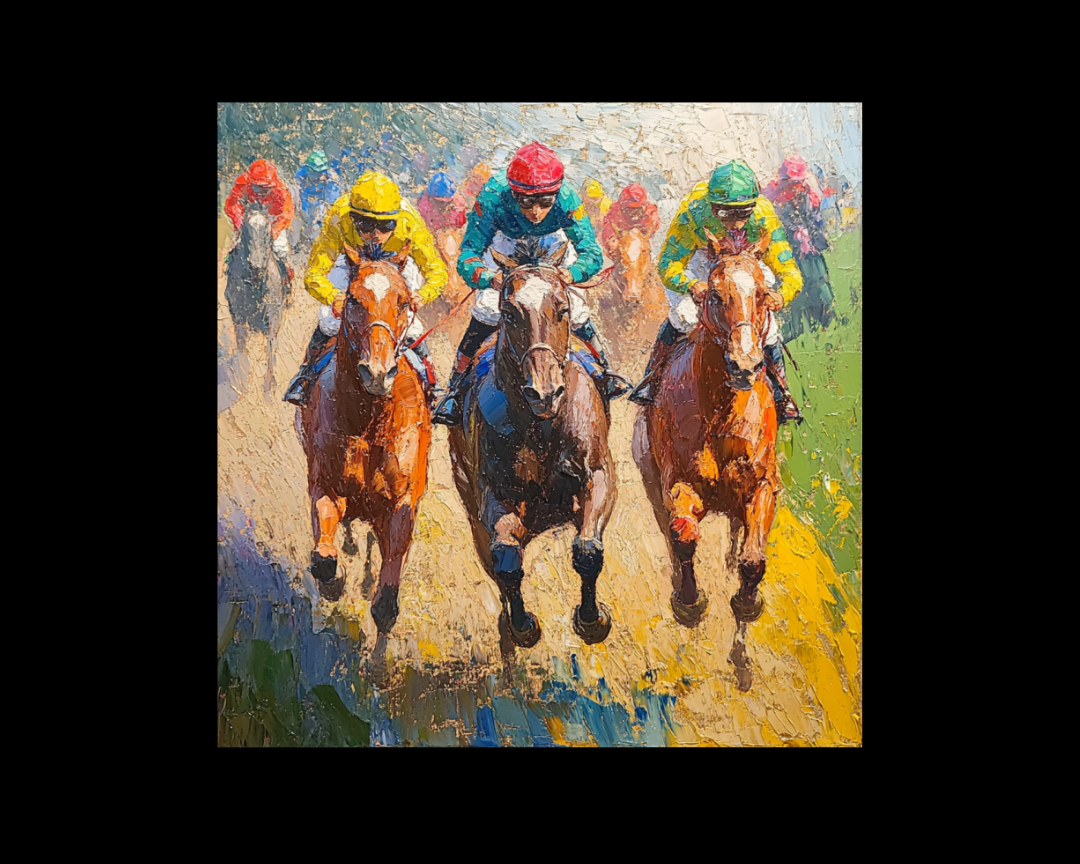Mastering Atmosphere in Fiction
For seasoned writers, creating atmosphere is more than just setting a scene—it’s about immersing readers so deeply in a story that they feel its...

Writers obsess over perfect beginnings, crafting elaborate world-building and character introductions like Victorian novels still ruled the literary landscape. But the most compelling contemporary stories don't start at the start—they plunge readers into the heart of action, leaving them gasping for context and desperate for answers.
In medias res, Latin for "in the middle of things," transforms passive readers into active participants. Instead of politely introducing characters over tea, you drop readers into a kidnapping, a breakup, or a body discovery. They're not observers; they're accomplices, thrust into urgency before they understand the stakes.
The Technique Decoded
In medias res operates as narrative time travel—beginning at a future point before rewinding to explain how characters arrived at that moment. Unlike traditional chronological storytelling, this technique prioritizes dramatic tension over linear progression.
Recent analysis of New York Times bestsellers reveals that 67% of successful novels employ some form of in medias res opening, compared to only 23% a decade ago. Modern readers, conditioned by streaming media and social platforms, expect immediate engagement rather than gradual buildup.
The technique doesn't require literal action—explosions or car chases. Edgar Allan Poe's "The Tell-Tale Heart" opens mid-conversation: "Now this is the point. You fancy me mad." No exposition, no character description, just immediate psychological intensity. We're eavesdropping on a confession before understanding the crime.
This approach serves multiple functions: it establishes stakes immediately, creates curiosity gaps that demand resolution, and demonstrates character under pressure rather than in comfort. Readers learn about protagonists through crisis response rather than biographical details.
Cognitive psychology explains why in medias res works so effectively. The human brain responds to incomplete information by creating mental models, actively seeking patterns and resolution. When stories begin mid-action, readers become cognitive detectives, assembling clues rather than passively receiving exposition.
Neuroscientist Dr. Paul Zak's research on narrative transportation shows that stories beginning with tension activate stress hormones, creating heightened attention and memory formation. Readers literally become physiologically invested in outcomes before understanding contexts.
This neurological response explains why traditional "once upon a time" openings feel sluggish to modern audiences. We're evolutionarily wired to prioritize immediate threats over background information. In medias res exploits this survival mechanism for narrative purposes.
The technique also leverages what psychologists call the "curiosity gap"—the discomfort created by incomplete knowledge. When readers encounter protagonists in crisis without understanding how they arrived there, cognitive dissonance demands resolution. They continue reading not from interest but from psychological necessity. Our guide to compelling narrative techniques explores how curiosity drives reader engagement.
Different genres employ in medias res with varying intensity and purpose. Thrillers typically begin with physical action—the protagonist fleeing danger or discovering crime scenes. Literary fiction favors emotional or psychological crisis—characters mid-breakdown or revelation.
Contemporary romance often opens with relationship conflicts rather than meet-cutes, showing couples arguing before explaining their history. Fantasy novels might begin with magical catastrophes, establishing world-building through consequence rather than exposition.
The technique adapts to story requirements. Some narratives begin moments before climax, others weeks into rising action. The key lies in selecting moments of maximum character vulnerability or decision-making, when stakes are clear even without context.
Television demonstrates in medias res mastery. Shows like "Breaking Bad" open with Walter White in his underwear, gun drawn in the desert, before explaining his transformation from chemistry teacher to drug manufacturer. The image creates questions that sustain viewer investment across episodes.
Strategic Selection: Choose opening moments that reveal character through action rather than explanation. Avoid arbitrary drama—the crisis must connect to your story's central conflict. A character fleeing assassins works only if assassination attempts matter to the plot.
Information Rationing: Provide enough context for readers to understand immediate circumstances without revealing everything. Balance mystery with clarity—confusion kills engagement faster than boredom. Readers should grasp what's happening even if they don't understand why.
Backstory Integration: Weave necessary exposition into forward action rather than stopping for flashbacks. Characters can reflect on past events while addressing present crises. This technique maintains momentum while providing essential context.
Emotional Anchoring: Ground readers in character emotions before plot details. We accept confusion about circumstances if we understand how characters feel about them. Fear, anger, or desperation creates immediate empathy regardless of situational complexity.
Promise Fulfillment: Every in medias res opening creates implicit promises about revelations to come. The story must eventually explain how characters reached their opening predicaments. Broken promises create reader betrayal more damaging than weak beginnings. Our exploration of effective story structure provides frameworks for managing these narrative promises.
Failed in medias res attempts typically suffer from three problems: arbitrary drama, excessive confusion, or weak payoff. Beginning with random action unconnected to central plot creates false advertising. Readers feel manipulated when dramatic openings lead to mundane stories.
Excessive confusion alienates rather than intrigues. While mystery drives engagement, complete bewilderment causes abandonment. Editorial surveys indicate that nearly half of agents reject manuscripts with confusing opening pages, regardless of later clarity.
Weak payoff represents the gravest sin. If your opening shows a character fleeing danger, readers expect to discover compelling reasons for that flight. Mundane explanations—late for work, avoiding awkward conversations—feel like narrative betrayal.
The most successful in medias res openings feel inevitable in retrospect. When readers reach the chronological moment matching the opening scene, it should feel like natural story progression rather than artificial manipulation.
Contemporary examples like Gillian Flynn's "Gone Girl" demonstrate masterful technique. The opening scene's seemingly ordinary marriage conflict gains sinister significance as darker truths emerge. The technique serves story rather than dominating it.
In medias res transforms storytelling from linear reporting into experiential engagement. It honors modern attention spans while creating deeper reader investment through active participation rather than passive consumption.
Mastering this technique requires understanding your story's emotional center and finding the moment when characters face their defining choices. Begin there, then earn the right to explain how they arrived.
Ready to craft openings that grab readers from the first sentence? Hire a Writer's narrative specialists understand how to balance mystery with clarity, creating compelling beginnings that deliver on their promises.
Contact us today to develop story openings that hook readers immediately and sustain engagement through every page turn.

For seasoned writers, creating atmosphere is more than just setting a scene—it’s about immersing readers so deeply in a story that they feel its...

You’ve likely encountered the term “rising action” and wondered how to use it to craft compelling stories. While it may sound complex, rising action...

Pacing is a critical element of storytelling, whether you're crafting a novel, short story, screenplay, or even creative nonfiction. The way your...